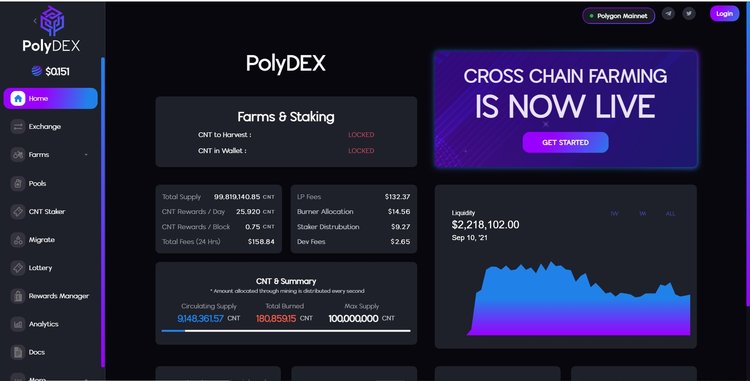For years now, the predictions and expectations of the arrival of Web 3.0 have been circulating around the crypto industry, mostly as nothing more than a mere concept. While creating blockchains and ecosystems has become something that developers have grown to be quite good at, all major blockchain networks exist as separate, isolated ecosystems.
They, and their different products, were prevented from contacting other such systems due to technological incompatibility, and for the longest time, interoperability was seen as something that may arrive someday in the future.
The last two years or so, however, have brought great focus on building bridges that would connect these isolated networks, and turn them into a cross-chain web that would eventually become the new Internet. This has not happened yet, of course, but every now and again, a new bridge gets announced, and we get closer to Web 3.0, one step at a time.
The most recent example of this comes from Cryption Network, which recently managed to connect itself to the Polygon Network, and its PolyDEX in order to enable cross-chain yield farming.
Cryption Builds a Bridge for Farming LP Tokens with ETH
Yield farming is one of the biggest use cases in the DeFi sector, which exploded last year, and is currently still seeing strong growth. It is a popular thing to do in crypto, as it allows users to lock up their tokens, and earn new ones as rewards. This works well for those who do not wish to risk their digital assets or wealth that they carry through trading, where one wrong move can end up costing the investor quite a bit.
With Cryption’s newly launched bridge, users who wish to HODL their Ethereum and still receive passive income in LP tokens will now be able to do just that, and with only a click of a button, at that.
In its recent blog post, the project explained how it all works, revealing that the process relies on two types of Polygon-Ethereum bridges. The first one is the PPOS Token Bridge, which is essentially nothing more than a set of contracts that will help move assets from Ethereum to Polygon. The second one is known as the State Sync mechanism and FxPortals as a Data bridge, and this is a mechanism that will read the data from Ethereum’s network on the Polygon chain. Both bridges require mapping of the root (Ethereum) and child (Polygon) contracts.
With this information revealed, the project also gave an example of what the process will actually look like. Keep in mind that this will be an entirely automated, background process, and users will be able to use the process for yield farming without ever knowing what is actually going on. But, for those interested, the process will start when the user deposits ETH on the Ethereum mainnet in a contract and specifies the details of the farm that they wish to enrol into.
At that point, the smart contract will process the information provided by the user, and prepare the metadata that will be sent from one chain to the other, effectively triggering the POS token bridge to port ETH to Polygon. Both the coins and the metadata will be transferred and stored in the CrossChainFarming Intermediary contract, with the tokens being conducted by POS, and FxPortals being triggered to move the metadata.
Finally, the State Sync event will be processed by the Polygon validators, which will complete the transfer of ETH and metadata. The Intermediator contract will then decode this metadata and trigger a new smart contract on Polygon, which will convert ETH to tokens required to add liquidity in the corresponding pairs and produce LP rewards. The process will end with the user receiving LP tokens.



